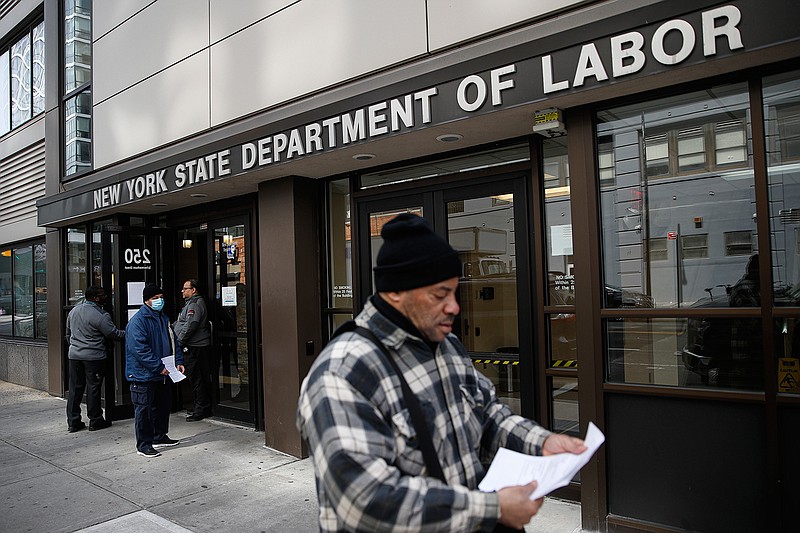WASHINGTON - Nearly 3.3 million Americans applied for unemployment benefits last week - almost five times the previous record set in 1982 - amid a widespread economic shutdown caused by the coronavirus.
The surge in weekly applications was a stunning reflection of the damage the viral outbreak is inflicting on the economy. Filings for unemployment aid generally reflect the pace of layoffs.
Layoffs are sure to accelerate as the U.S. economy sinks into a recession. Revenue has collapsed at restaurants, hotels, movie theaters, gyms and airlines. Auto sales are plummeting, and car makers have closed factories. Most such employers face loan payments and other fixed costs, so they're cutting jobs to save money.
As job losses mount, some economists say the nation's unemployment rate could approach 13% by May. By comparison, the highest jobless rate during the Great Recession, which ended in 2009, was 10%.
"What seemed impossible just two weeks ago is now reality," said Nancy Vanden Houten, an economist at Oxford Economics, a consulting firm. "The US economy will experience the largest economic contraction on record with the most severe surge in unemployment ever."
The economic deterioration has been swift. As recently as February, the unemployment rate was at a 50-year low of 3.5%. And the economy was growing steadily if modestly. Yet by the April-June quarter of the year, some economists think the economy will shrink at its steepest annual pace ever - a contraction that could reach 30%.
In its report Thursday, the Labor Department said 3.283 million people applied for unemployment benefits last week, up from 282,000 during the previous week. Many people who have lost jobs in recent weeks, though, have been unable to file for unemployment aid because state websites and phone systems have been overwhelmed by a crush of applicants and have frozen up.
That logjam suggests that Thursday's report actually understates the magnitude of job cuts last week. So does the fact that workers who are not on company payrolls - gig workers, free-lancers, the self-employed - aren't currently eligible for unemployment benefits even though in many cases they're no longer able to earn money.
Asked about the record-high applications for jobless aid, President Donald Trump said the figures were "fully expected."
"It's a lot of jobs, but I think we'll come back very strong," he said.
With layoffs surging, a significant expansion of unemployment benefits was included in an economic relief bill nearing final approval in Congress. One provision in the bill would provide an extra $600 a week on top of the unemployment aid that states provide. Another provision would supply 13 additional weeks of benefits beyond the six months of jobless aid that most states offer. The new legislation would also extend unemployment benefits, for the first time, to gig workers and others who are not on company payrolls.
Separate legislation passed last week provides up to $1 billion to states to enhance their ability to process claims. But that money will take time to be disbursed.
In the United States, the jump in applications for benefits is playing out in states across the country. In California, claims for unemployment benefits more than tripled last week to 187,000. In New York, they rose by a factor of five to 80,334. Nationwide, about 2.25% of the entire workforce applied for jobless aid last week. In Nevada, the figure was 6.8%, in Rhode Island 7.5%.
Gov. Gavin Newsom said 1 million claims for unemployment benefits had been filed in California since March 13. Many of those applications were likely filed this week, suggesting that next week's report could show an even larger number of claims.
Even for those able to file a claim, the benefits will take time to kick in. It typically takes two to three weeks before applicants receive any money. State agencies must first contact their former employers to verify their work and earnings history. Only then can the employee's weekly unemployment benefits be calculated.
Worsening the problem, most state agencies that handle unemployment claims are operating at historically low funding levels and staffing that are intended to handle a trickle of claims. Just weeks ago, the job market was in the strongest shape it had been in decades.

